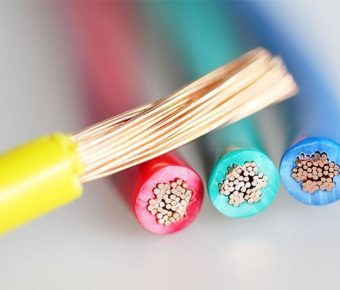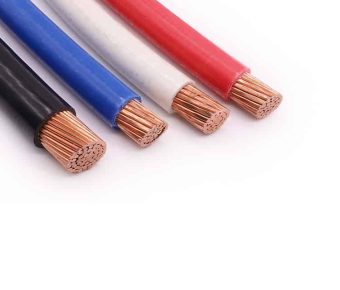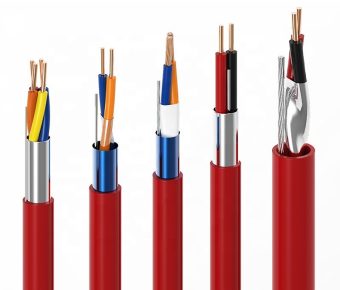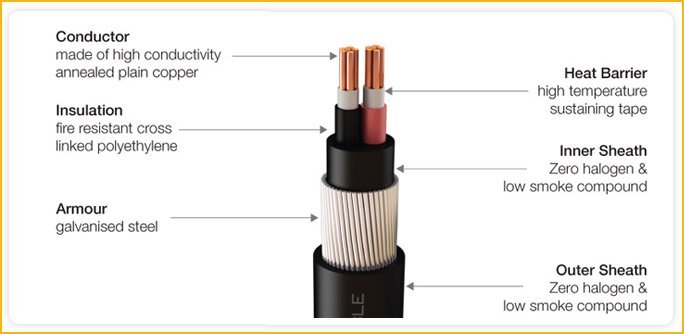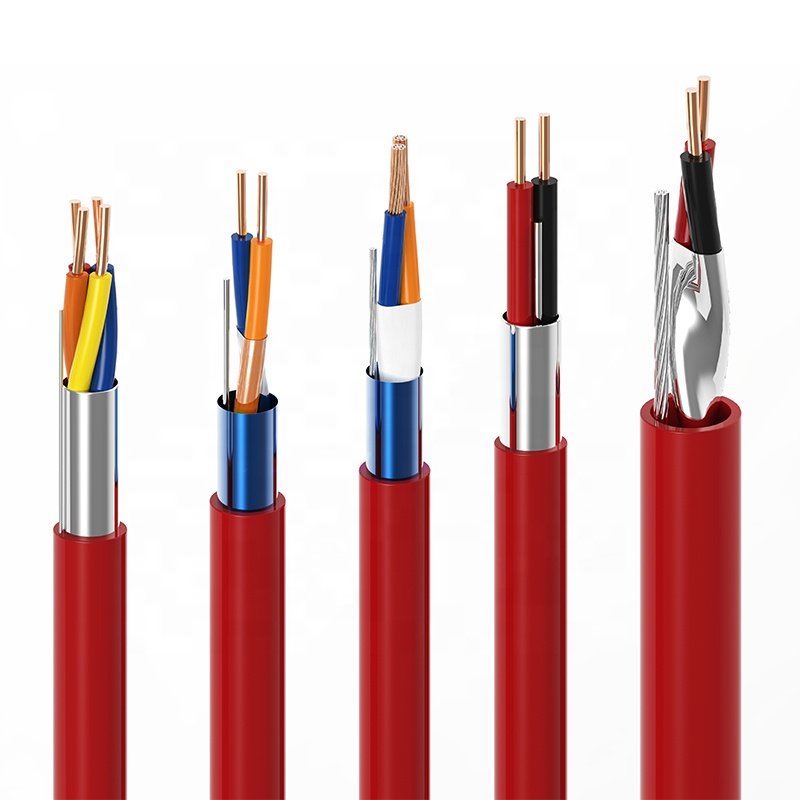- Leading Cable and Wire Manufacturer-ZW
- Fire Cable
Fire Cable
- According to IEC and Standard
- LFZH & LSZH Cable
- Approved by GB, CCC, IEC, VDE
- Orange Colour
Fire cable is made of two separate wires that are coated in a high-temperature insulating material. These wires are then twisted together and wrapped in a protective sheath. The wires carry electrical current and thermal energy from one cable end to another. The outer sheath protects them from damage and allows them to be handled without burning themselves.
Conductor: 1.5mm2~6mm2 Class 1 Solid Core
10mm2~240mm2 Stranded Copper
Insulation: Halogen-free
Sheath: Halogen-free, UV Protect
Fire Cable: Whole world Better Fire Alarm Cable
The fire cable is a simple type of power cable, but it also has the highest requirements for fire performance. It is particularly suitable for continuous insulation. At present, the most widely used fire retardant cables and halogen-free low smoke cables.
What is a fire cable?
Fire cable is defined as cables that can continue to operate in the event of a fire. Fire-rated cables are usually manufactured with a halogen-free inner jacket and a flame retardant jacket. The flame retardant jacket may be made from PVC, PE, or FRP, depending on the specific application requirements.
Fire cables are typically used in areas with high fire risks, such as factories, warehouses, and data centers. In addition to protecting against fire, they also offer protection against water ingress and oil spills due to their flame retardant properties.
Fire cable is available in many standards, including UL and CSA standards for fire resistance. The most common standard is UL 1666, which requires cables to withstand continuous operation at a temperature of 350°C for 60 minutes without any performance or service life degradation.
The main reason fire cables are required is that they are designed to continue working even if they are exposed to fire. This is important it allows people to be still able to communicate even if there is a fire at the site.
Fire resistant cable types
LSZH and LSF cables are a type of fire-resistant cables that can be used in hazardous areas. Both LSZH and LSF cables have a flame-retardant outer jacket and are rated to UL VW-1 or VDE 0472. In addition, the interior wire insulation must be rated at least 94V-0. LSZH and LSF cables are available in both solid or stranded conductor types.
LSZH (Low Smoke Zero Halogen)
LSZH is a fire-retardant jacketing material often used on cables in aircraft, hospitals, and other high-stress environments. The military also uses it to protect soldiers from smoke inhalation during chemical weapons attacks. LSZH cable is made of PVC, but it’s treated with halogen-free flame retardants and other additives to keep it safe even when exposed to extreme heat.
Like LSZH, LFZH is a fire-retardant jacketing material used on cables in high-risk environments. The distinctions between these two kinds of wires are that LFZH uses less flame retardants than LSZH. This means that LFZH cables are safer for use in environments with a risk of exposure to toxic chemicals or radioactive materials.
What size is fire alarm cable?
The answer to your inquiry depends on the fire alarm cable size and the circuit it is to be wired.
The National Fire Protection Association (NFPA) establishes standards. For fire alarm systems in the United States, those standards require that a 15-amp circuit (wired with 14-gauge wire) or a 20-amp circuit (wired with 12-gauge cable) is acceptable for most fire alarm circuits.
Most fire alarm systems are powered by 120 volts of 60 Hertz power, which a standard wall outlet can supply. The only exception is when you use low voltage signaling devices, such as horns or bells, which use 24 volts of DC power.
The NFPA recommends that you do not exceed 20 amps per circuit. If your fire alarm system requires more than 20 amps, you will need multiple circuits wired together to provide adequate power for your entire system.
In commercial buildings, the NEC allows for either 10 or 12 gauge wire to be used for fire alarm systems. However, due to their lower ampacity ratings, it is recommended to use 12-gauge wire whenever possible so that you do not have to increase the number of circuits or decrease their length too much.
When choosing fire cables for your system, you should choose cables rated for 15 amps or 20 amps, depending on what type of circuit your building has installed by an electrician.
Fire Cable Specification
Fire cables are the best cable to use for your electronic devices. It is a type of cable that has been designed for fire safety and protection. The cable is constructed of high-quality materials and has a unique construction.
The firing cable has its advantages, which include:
1. Fireproof
The fireproof nature of the cable makes it ideal for use in industries like mining, oil and gas, and marine and offshore applications where there is a risk of fire. The cable also offers excellent protection against damage caused by heat as it can withstand temperatures as high as 700°C.
2. Flexible
The flexible nature of the fire cable makes it easier to install without any problems. Due to their rigidity, this makes it impossible to establish quickly in other types of cables.
3. High strength
The high strength of this type of cable makes it possible for you to carry out essential tasks without worrying about any accidents or damages occurring during installation or use.
Conclusion
The price of fire cable made by ZW Cable is competitive. In the past, fire cables with high power output were sold at high prices, but now many industries are interested in great products and would like to get long-term cooperation with us. Because ZW cable provided good quality cables and help them solve issues. Check our website, and will find more options.

